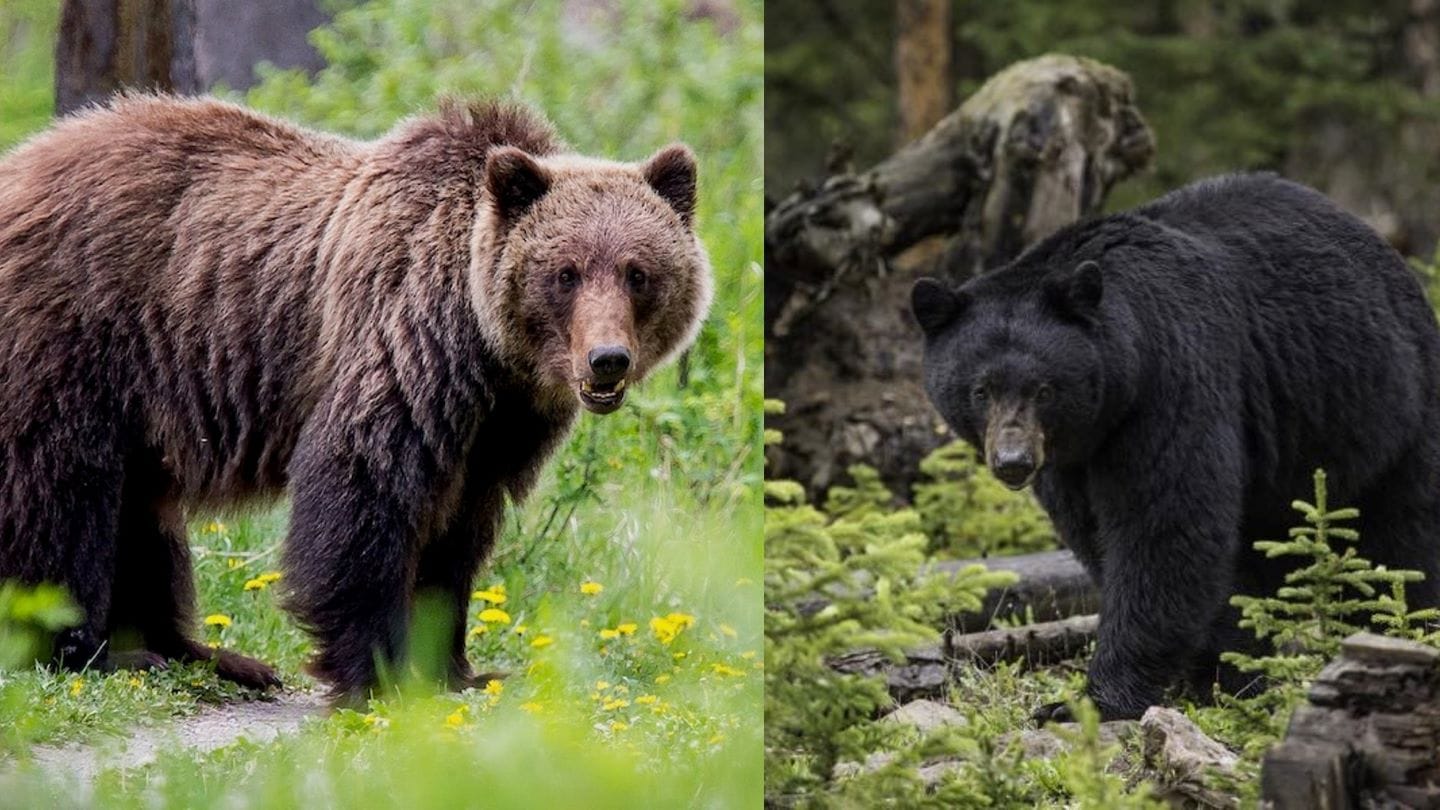Debunking the Myth: Can Grizzly Bears Climb?
For years, the image of a grizzly bear has been confined to the forest floor—a powerful giant roaming amongst the undergrowth. While it’s true they spend a significant amount of time on the ground, these bears aren’t limited to just walking around. Believe it or not, grizzly bears can climb trees!
Contrary to popular belief, grizzly bears can climb trees. However, their skills aren’t as refined as their more agile black bear cousins. Grizzly cubs are particularly adept, scampering up trees with surprising speed. “Grizzly cubs can climb as well as black bears, if not better,” explains Animal Vivid. “They aren’t as heavy as adult grizzlies and rely on their long, curved talons to burrow into the tree’s surface and skin, dragging themselves upward.” This serves them well, helping them avoid danger and access food sources high in the foliage.
As grizzlies mature and gain weight, climbing becomes more challenging. Their bulk limits their agility, making those daring ascents less graceful. You’ll typically find younger bears hanging out in trees more often, utilizing their nimble bodies to their advantage.
Why Grizzlies Climb: It’s All About Strategy
So, why would a grizzly bother climbing in the first place? For these resourceful bears, it’s all about strategy:
- Food, glorious food: Imagine a world of juicy berries hanging high above, bird nests tucked away in branches, and even honey-laden beehives. Climbing unlocks a treasure trove of tasty treats for a hungry grizzly.
- Safety first: The wilderness is a dangerous place, especially for a young cub. If a grizzly senses danger—say, a pack of wolves or a larger, more dominant bear—a sturdy tree offers a safe haven.
- Time to relax: Sometimes, even a bear needs a break. Trees provide a peaceful spot to rest, maybe even catch a little nap, all while enjoying a panoramic view of their surroundings.
Grizzly Bear Climbing: Anatomy vs. Agility
You might be wondering how a grizzly manages to climb with such bulk. The answer lies in their physique. Their strong claws, though not as curved as a black bear’s, dig into the bark, giving them a solid grip. Those powerful muscles we mentioned? They provide the brute strength needed to pull themselves up.
When choosing a tree, grizzlies are picky. They gravitate towards trees with thick, robust branches spaced far enough apart to support their weight. And of course, if the tree boasts delicious fruit or an unbeatable view, that’s a bonus!
Black bears, however, are the undisputed champions of the trees. “Black bears are the best climbers of all bear species,” states AZ Animals. “Black bears are equipped with curved claws that serve as hooks when moving up a tree. These claws provide the grip, while the black bear’s muscular build provides the strength. This combination allows black bears to climb trees with both agility and blazing speed.”
Grizzly Bears in Trees: Debunking Myths and Understanding Risks
While grizzlies can climb, it’s essential to address the common misconception that climbing a tree guarantees safety during a bear encounter. A Montana hunter learned this the hard way, finding himself trapped up a tree with an aggressive grizzly, proving that this strategy is far from foolproof.
Black bears, with their agility and climbing prowess, pose just as much of a threat. Backpacker magazine highlights an instance where a black bear effortlessly retrieved food from a tree, showcasing their remarkable skills.
It’s crucial to remember that both grizzly and black bears are wild animals with unpredictable behavior. Relying on a tree for safety during an encounter is a risky gamble. Instead, focus on prevention and preparedness:
- Carry bear spray: This highly effective deterrent can stop a bear in its tracks, giving you time to escape.
- Make noise while hiking: Bears are more likely to avoid confrontation. Talking or singing alerts them to your presence, giving them a chance to steer clear.
- Properly store food: Don’t attract bears to your campsite with tempting smells. Use bear-proof canisters or hang food high in trees.
Beyond Height: Unveiling the Secrets of Bear Climbing Behavior
While we’ve established that grizzly bears can climb and explored the reasons behind their ascents, the question remains: how high can they really go?
The answer, like most things in nature, is not simple. It depends on a variety of factors, including the bear’s age, size, and motivation. A young, spry cub might effortlessly scale a considerable height, while a full-grown adult is more likely to stick to lower branches.
Research suggests that grizzly bears can reach heights of up to 9 feet (2.8 meters), utilizing their powerful leg muscles and a reach exceeding 8 feet to pull themselves up. Their long claws, while not as curved as those of black bears, provide adequate grip on rough bark.
Black bears, on the other hand, are known to reach astonishing heights of up to 80 feet, showcasing their superior climbing abilities. Their lighter weight, agile bodies, and curved claws make them expert climbers, capable of navigating the canopy with ease.
Unraveling the Mysteries: Exploring the Future of Grizzly Bear Climbing Research
The study of grizzly bear climbing behavior is ongoing, with researchers constantly uncovering new insights into these fascinating creatures. Here are some potential areas for future exploration:
- The impact of climate change: As climate change alters forest ecosystems, how might grizzly bear climbing behavior be affected? Will they rely on trees more for food or shelter as their habitat changes?
- Regional variations in climbing: Do grizzlies in certain areas display more or less climbing activity than others? What environmental factors might contribute to these differences?
- Climbing techniques and biomechanics: A deeper analysis of the specific climbing techniques employed by different bear species, including muscle use and skeletal structure, could provide valuable insights into their evolutionary adaptations.
By continuing to study grizzly bear climbing behavior, we gain a deeper understanding of these creatures and their role in the delicate balance of the ecosystem. As we learn more about their habits and adaptations, we can better coexist with these magnificent creatures and ensure their survival for generations to come.













1 thought on “Grizzly Bears and Tree Climbing: Separating Fact From Fiction”
Comments are closed.